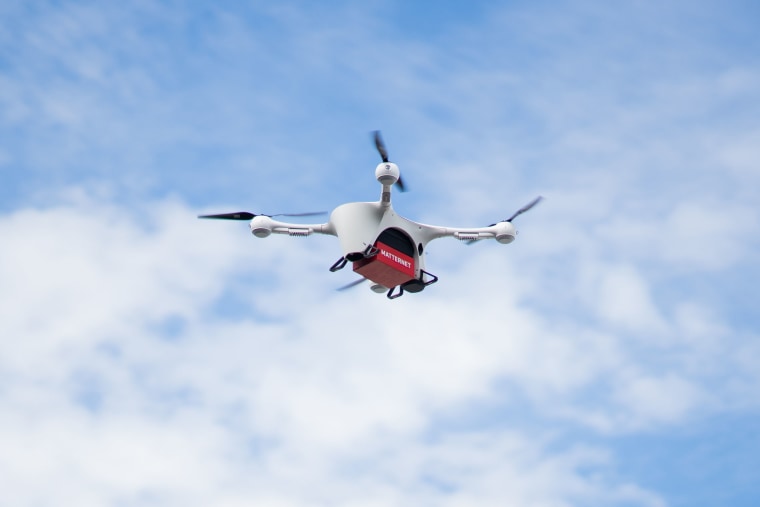Drone deliveries, slow to take flight, come to Silicon Valley

The hype around drones may finally be starting to deliver.
Drone deliveries, first touted by Amazon more than a decade ago, are slowly taking off in some parts of the U.S. On Thursday, Matternet, a drone delivery startup, launched its service to Silicon Valley.
“After years of advancing drone delivery in healthcare, we’re excited to launch our first home delivery operation in the heart of Silicon Valley,” said Andreas Raptopoulos, founder and CEO of Matternet, in a blog post. “We’re entering the next phase of scale in drone delivery — building a new layer of ultra-efficient logistics infrastructure that will become an essential utility for every household.”
The announcement adds to signs of growth for drone delivery. In Fort Worth, Texas, which recently became the first major city in the United States to offer commercial drone deliveries, they’re being used to deliver groceries from WalMart.

In College Station, Texas, Amazon’s drone delivery service has become common enough for residents to see the service as a noisy nuisance. And, with recent FAA approval, the company seems set to expand drone delivery operations across the city and beyond.
Experts say many of the obstacles to drone delivery, most notably the technology and regulations, have been hurdled.
“I think after what has been about a decade of a slow start, drone delivery seems to be accelerating both in its technological capabilities as well as the policy and regulatory environment in the United States,” Costa Samaras, director of Carnegie Mellon’s Scott Institute for Energy Innovation, told NBC News.
Samaras said the drones, which are powered by electricity, will mainly be used to transport lightweight, time-sensitive deliverables such as medicine or groceries. It’s an attractive innovation, he said, because most of those deliveries are still done by combustion-engine cars that are pollutive and inefficient.
“If you forgot something at the store, or need something quick, getting that delivered by drone is easier and faster than taking your vehicle, and it’s much better for the climate,” he said.
Samaras said his research indicated that drone delivery, compared to fossil-fuel truck delivery, consumes up to 90% less energy per package.
But the regulatory framework and self-piloting technology have only recently caught up with the hype.
The Federal Aviation Administration said in a statement that it is focused on permitting Beyond Visual Line of Sight (BVLOS) operations, which would allow drones to fly without needing a pilot to stay within sight of it.
Zipline, the world’s largest drone delivery service, is among the companies that have received that permission in several states. The company plans to go nationwide with drone delivery in 2026.
“A lot of the risks have been retired, and I’m super excited how much progress we’re going to be able to make in the next few years with a lot of this uncertainty behind us,” Eric Watson, engineering lead at Zipline, told NBC News.
Watson said the company hopes to aerially deliver tens of thousands of packages per day within the next few years across the country, and they are already doing deliveries in Arkansas and Utah, with plans to expand to Dallas later this year.
A spokesperson for Amazon’s Prime Air drone-delivery program told NBC News it hopes to be delivering 500 million packages per year by the end of this decade.
The FAA told NBC News that there are currently more than 383,000 drones registered for commercial purposes. By 2028, the agency forecasts that that number could balloon above 3 million.
Yanfeng Ouyang, a transportation engineering professor at the University of Illinois Urbana-Champaign, agrees that the technology is close to mass availability, but hopes some of the potential negative consequences can be curtailed.
“It’s right around the corner, and we will see very rapid development in the next year or two,” Ouyang said.
“But several challenges still need to be addressed,” he added, such as the potential for an expanded surveillance state, as well as whether communities will be OK with a large number of drones whizzing overhead at all times.
“I am optimistic, but I don’t think there are sufficient regulations yet, and I think the government will have to play a very significant role moving forward,” Ouyang said.

No comments:
Post a Comment